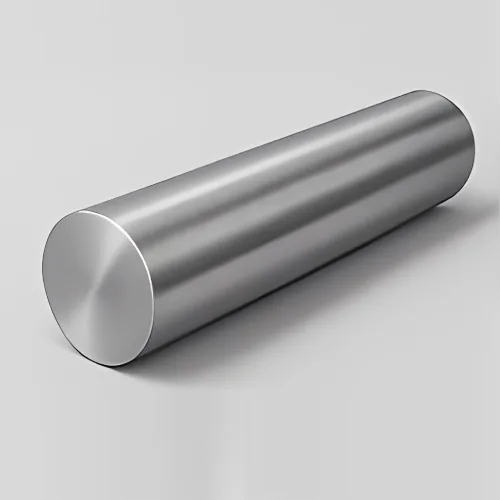
321 Stainless Steel Round Bar
Keywords: 321,
Standard: ASTM, AISI, DIN, EN, GB, JIS
Technique: Hot Rolled/Cold Rolled/Galvnized
Processing Service: Welding, Punching, Cutting
Available Size Range: Click here
Volume: 0
Get A Quote
Keywords: 321,
Standard: ASTM, AISI, DIN, EN, GB, JIS
Technique: Hot Rolled/Cold Rolled/Galvnized
Processing Service: Welding, Punching, Cutting
Available Size Range: Click here
Volume: 0
Get A Quote| Region | Standard | Grade Code |
|---|---|---|
| USA | ASTM A276 | UNS S32100 |
| Europe | EN 1.4541 | X6CrNiTi18-10 |
| China | GB/T 1220 | 06Cr18Ni11Ti |
| Japan | JIS SUS 321 | - |
| International | ISO 15510 | X7CrNiTi18-10 |
| Element | Content | Functional Role |
|---|---|---|
| Titanium (Ti) | ≥5×C% (min.) | Prevents chromium carbide formation during welding/heat exposure |
| Chromium (Cr) | 17.0–19.0% | Forms heat-resistant chromium oxide layer |
| Nickel (Ni) | 9.0–12.0% | Stabilizes structure under cyclic thermal loads |
| Carbon (C) | ≤0.08% | Controlled for weld integrity |
| Iron (Fe) | Balance | Matrix foundation |
Mechanical Properties
Tensile Strength: 515–720 MPa (solution-annealed)
Creep Resistance: 120 MPa at 600°C (1.000-hour rupture)
Thermal Cycling Tolerance: 200+ cycles (ambient to 800°C)
Hardness: 70–90 HRB (annealed), customizable via cold drawing
Max Service Temp: 900°C (intermittent), 700°C (continuous)
Thermal Expansion: 17.3 μm/m·K (20–100°C)
Oxidation Threshold: Up to 925°C in dry air
Magnetic Response: Non-magnetic post-annealing
Heat War Veteran:
Outperforms 304/316 in cyclic heating (e.g., kiln fixtures, jet engine mounts).
Weld Zone Guardian:
Titanium neutralizes carbon, eliminating post-weld decay risks.
Corrosion Arsenal:
Resists sulfuric/nitric acids, steam, and thermal oxidation scaling.
Fatigue Resistance:
30% higher stress-cycle endurance vs. non-stabilized grades.
Sustainability Plus:
85% recycled content; RoHS/REACH compliant.
| Industry | Transformative Uses |
|---|---|
| Aerospace | Combustion chamber liners, turbine shafts |
| Automotive | High-temp exhaust manifolds, EGR components |
| Chemical | Catalyst grids, pyrolysis tubes |
| Power Generation | Boiler tubes, superheater supports |
| Additive Manufacturing | High-purity powder feedstock for 3D printing |
Q1: Why choose 321 over 347 stainless steel round bars?
A: 321 uses titanium stabilization, while 347 employs niobium. 321 offers better formability for deep-drawn parts; 347 excels in higher continuous temps (above 800°C).
Q2: Can 321 bars be used in as-welded conditions?
A: Yes—titanium eliminates sensitization risk. No post-weld heat treatment required for most environments.
Q3: Compliance for food/medical use?
A: Meets FDA 21 CFR 175.300 for indirect food contact; not recommended for implantable devices (use 316L instead).
Strategic Collaboration Perks
Certified Quality:
Mill Test Reports (MTRs) with traceable heat numbers and AMS 5512 compliance.
Tailored Dimensions:
Diameter: 5mm–250mm | Length: 1m–8m (±0.05mm precision) | Custom straightness (±0.1mm/m).
Global Reach:
Stocked in Rotterdam, Houston, Shanghai hubs; air/ocean freight optimized.
Value-Add Services:
Precision cutting, ultrasonic testing (UT), and anti-scratch PVC sleeving.
Keywords: 321 Stainless Steel Round Bar, Titanium-Stabilized Alloy, UNS S32100. High-Temp Steel, Aerospace-Grade Bar
Products
Phone